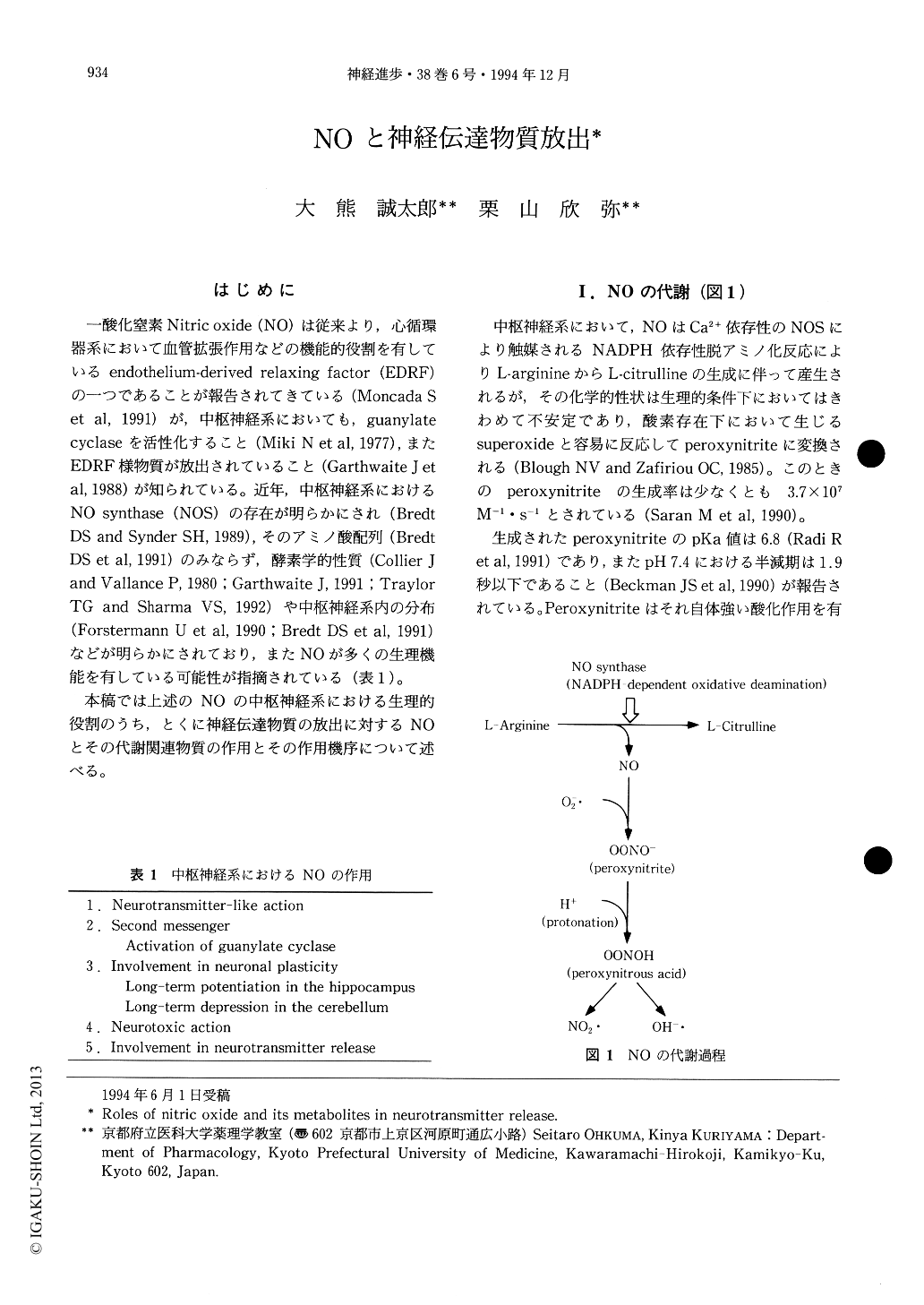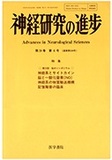Japanese
English
- 有料閲覧
- Abstract 文献概要
- 1ページ目 Look Inside
はじめに
一酸化窒素Nitric oxide(NO)は従来より,心循環器系において血管拡張作用などの機能的役割を有しているendothelium-derived relaxing factor(EDRF)の一つであることが報告されてきている(Moncada Set al,1991)が,中枢神経系においても,guanylatecyclaseを活性化すること(Miki N et al,1977),またEDRF様物質が放出されていること(Garthwaite J etal,1988)が知られている。近年,中枢神経系におけるNO synthase(NOS)の存在が明らかにされ(Bredt DS and Synder SH,1989),そのアミノ酸配列(BredtDS et al,1991)のみならず,酵素学的性質(Collier Jand Vallance P,1980;Garthwaite J,1991;TraylorTG and Sharma VS,1992)や中枢神経系内の分布(Forstermann U et al,1990;Bredt DS et al,1991)などが明らかにされており,またNOが多くの生理機能を有している可能性が指摘されている(表1)。
本稿では上述のNOの中枢神経系における生理的役割のうち,とくに神経伝達物質の放出に対するNOとその代謝関連物質の作用とその作用機序について述べる。
Nitric oxide (NO) is an unstable co-product during the conversion of L-arginine to L-citrulline via NADPH-dependent oxidative deaminatioii catalyzed by NO synthase and rapidly reacts with superoxide to form a potent oxidizing compound, peroxynitrite. NMDA increased the releases of acetylcholine (ACh) and GABA from cerebral cortical neurons, which was significantly inhibited by MK-801, a noncompetitive antagonist for the NMDA receptor complex.

Copyright © 1994, Igaku-Shoin Ltd. All rights reserved.


